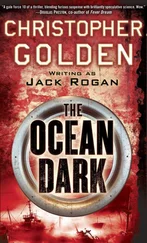During all those years, an academic debate was also raging among the old-guard Asia hands who were in charge of managing the relationship. This debate is often summed up as “Who lost China?” Essentially, the United States had pursued a strategy of “open engagement,” which meant that it actively promoted China’s economic development and success while working to integrate China into as much of the international system as possible. The bet was that China was given this help on the promise that it would steadily reform economically and politically, a promise the West had no means to enforce once the help was accepted. Some of the older generation say that the only responsible course of action twenty years ago was to pursue open engagement with China in the hope China would become more like us, but China just decided to go a different way. Some will say that approach was always misguided. Some will say it’s still the only responsible approach right now.
For the younger generation of Asia hands, the debate over “who lost China” didn’t much matter, because we hadn’t been around when the bet was made and we bore no allegiance to it one way or the other. The younger generation of Asia hands saw China for what it was, not for what the older generation said it was or wanted to believe it would become. They were not a monolith of opinion or analysis. But there was a lot less disagreement about the prognosis than about the solutions.
When the Trump administration came to power, the only thing that was ensured was that it would be disruptive. That was an opportunity for the young foreign policy hands, many of whom had been waiting their entire career for such a disruption to elevate the China issue to the top of the agenda. But still, the conventional wisdom was that China’s rise was inevitable and there wasn’t much we could or should do about it.
The most common way to dismiss the idea of confronting China in Washington is to point to the risk that such confrontation could lead to outright conflict. In 2015, Harvard’s Graham Allison wrote in the Atlantic that the United States and China were headed into what he termed “the Thucydides Trap,” a reference to the Greek historian’s writings on the Peloponnesian War between Athens and Sparta. He later turned his article into a book. Allison’s Thucydides Trap theory holds that, when the dominance of one power is threatened by another, the resulting tension often leads to bloodshed. But that theory doesn’t fit the US-China relationship for a whole host of reasons. The simplest one is that shifting power dynamics are only one reason that nations historically have gone to war. Also, it’s a variable that’s impossible to measure, because the relative power of a nation isn’t always clear, especially throughout the large sweep of history. This idea is also deeply rooted in a Westerncentric view of history. It also assumes that China’s rise is inevitable, an assumption that ignores the severe economic and political challenges China faces as it grows. The Thucydides Trap concept is interesting, but we shouldn’t base our strategy on it. One could just as easily use a comparison of domestic political systems as a basis for predictions. And of course, any serious student of history knows how other nationalist-socialist systems have fared.
Ultimately, the challenge that China poses is greater than can be contained in any single, simple vessel, whether “open engagement” or “containment” or “the Thucydides Trap.” The fact of the matter is that the rise of China has been a complex, turbulent process with myriad repercussions and no single, simple solution. And while the root of much of the tension is the character and behavior of the CCP, the US response—especially under Trump—has been all over the map, making the problem more difficult to solve than it needed to be, or might have been otherwise.
Chaos Under Heaven
There are two basic narratives about Donald Trump and his handling of the US-China relationship during his presidency. The first—more popular among the media—is that this neophyte president bumbled his way through the most important bilateral relationship at a crucial juncture. According to this argument, Trump was flailing between tough but ineffective trade wars, a love affair with China’s dictator-for-life, and a general disregard for traditional American values like democracy, freedom, and human rights. He made important decisions on a whim, based on the last person he talked to. He set his factions against each other in an Oval Office turned policy Coliseum and lorded over the battles, picking winners based on his instincts, which varied daily.
The second narrative—told mostly by those closest to the president—is that Trump actually has a firm view on China, an outlook that he brought into his presidency and that has stayed consistent throughout. Trump set his advisers against each other, this theory goes, because he wanted them to compete to serve him ideas that fit his vision, not because he didn’t know what he wanted. The conflicting public statements by Trump’s officials merely reflect their disagreements, in this view—not Trump’s own internal confusion.
These two narratives are not mutually exclusive, and there are elements of truth in both—as well as myths and fabrications that future historians will need to separate from hard facts. It’s true that Trump prioritized his trade deal above national security concerns and cared little about human rights. It’s also true that he believed his friendship with Xi was constructive and close and that caused him to make concessions foolishly. And it’s true that Trump was personally committed to confronting China on the issues that he did care about, such as trade, but that he constantly changed his mind about the tactics. The sheer chaos of the White House on all issues all the time made a steady, much less predictable, strategy impossible.
What’s certain, however, is that the Chinese leadership misinterpreted and misunderstood Trump and his administration egregiously and constantly from the start. They can’t be blamed; most of us were operating in the same fog. But the Chinese leadership over and over again came to the wrong conclusions both about Trump and about how his administration worked.
The chaos that defined the Trump administration came at a time when the US-China relationship was already entering a particularly unforgiving period. When the Trump administration unexpectedly came to power, US-China relations were at the center of three tectonic trends: the rise of nationalism and popul ism due to the unequal distribution of benefits from globalization; the rise of emerging and foundational technologies that have altered both daily life and the way governments, companies, and people interact; and the fraying of a world order that was built for an era when the United States was the only superpower and the spread of democracy everywhere seemed inevitable.
Over the course of Trump’s presidency, awareness inside the US government and around the country steadily grew that China’s rise and the Chinese government’s strategy play into all three of those dynamics. Put simply, a China that is militarily expansionist, economically aggressive, internally repressive, and increasingly interfering in democratic societies poses enormous challenges for the United States along with all of our allies, friends, and partners. The effects are already being seen in our national security, our investments, our industries, our schools, our media, and even our elections.
Even in 2016, the FBI was flooded with cases of Chinese espionage they didn’t have the resources or mandate to prioritize. US industries were watching Chinese firms steal their technology and then use it to vanquish them, including in their own country. Universities were contending with attempts by the Chinese government to curb their debates and silence their students. The Chinese propaganda machine was actively trying to shape American public discussion. Money was flowing into our politics in ways we couldn’t track. Gradually, these problems became too big to ignore.
Читать дальше











